Did you know that tomato plants can release chemical signals through their leaves to protect themselves and attract beneficial organisms? Tomato leaves are not just green appendages; they play a crucial role in the overall health and vitality of the plant. Understanding the characteristics and potential issues with tomato leaves is essential for successful gardening and disease management.
Key Takeaways:
- Tomato leaves release chemical signals to protect the plant and attract beneficial organisms.
- Understanding tomato leaf characteristics is crucial for successful gardening and disease management.
- Tomato leaves play a vital role in the plant’s defense against pests and diseases.
- Common issues with tomato leaves include spots, yellowing, and curling.
- Proper identification and management of tomato leaf diseases is essential for plant health.
The Role of Tomato Leaves in Plant Health
Tomato leaves are not just green appendages; they play a crucial role in maintaining the overall health and well-being of tomato plants. Beyond their aesthetic value, tomato leaves act as the first line of defense against pests and diseases, employing chemical signals to protect the plant and ensure its survival.
When faced with herbivorous insects, tomato leaves release chemical signals that attract predatory insects to target and control these pests. This natural form of pest control helps maintain a balanced ecosystem within the garden and reduces the need for harmful pesticides. By attracting these beneficial organisms, tomato leaves protect the plant from potential damage and support its growth.
Additionally, tomato leaves utilize chemical signals to communicate with neighboring plants. When a tomato plant is under attack or faces potential threats, it releases chemical whispers that warn other plants in the vicinity. This communication allows neighboring plants to activate their defense mechanisms and prepare for impending dangers, further enhancing plant health and resilience.
“The release of chemical signals by tomato leaves illustrates the sophisticated defense mechanism these plants have developed to survive in their natural environment.”
Furthermore, tomato leaves are involved in the production of essential compounds that contribute to the plant’s overall health. These compounds include phytochemicals, such as antioxidants and flavonoids, which protect the plant from oxidative stress and support its immune system.
Understanding the vital role of tomato leaves in plant health enables gardeners to implement strategies to promote their well-being. By ensuring optimal growing conditions, providing adequate nutrition, and avoiding unnecessary disturbances, such as excessive pruning, gardeners can support the robustness and productivity of their tomato plants.
Cultivating Plant Health: Tips for Healthy Tomato Leaves
- Plant tomatoes in a well-draining soil enriched with organic matter to promote healthy root development and nutrient absorption.
- Provide sufficient sunlight exposure to the tomato plants, ensuring they receive at least 6-8 hours of direct sunlight daily.
- Water tomato plants evenly and consistently, avoiding both under and over-watering, to prevent water stress and root diseases.
- Implement proper spacing between tomato plants to ensure adequate air circulation and reduce the risk of disease spread.
- Use organic fertilizers or compost to supplement the soil with essential nutrients and promote plant health.
- Avoid excessive pruning of tomato leaves to maintain their photosynthetic capacity and protective function.
- Regularly inspect tomato plants for signs of pests or diseases and take immediate action to mitigate any potential threats.
By taking these measures, gardeners can foster the well-being of tomato leaves, enhancing the overall health and productivity of their tomato plants.
Common Issues with Tomato Leaves
Despite their important role, tomato leaves can experience various issues that affect the plants’ health. Common problems include leaf spots, yellowing, and curling. These issues may be caused by diseases, nutrient deficiencies, pests, or environmental factors. Identifying and addressing these issues promptly is crucial to maintaining the overall health and productivity of tomato plants.
Leaf Spots
One common issue that affects tomato leaves is the development of leaf spots. Leaf spots appear as small, dark or discolored areas on the surface of the leaves. These spots can be caused by fungal or bacterial infections, such as early blight or septoria leaf spot. Over time, the spots may enlarge and cause the leaves to wither and die.
To address leaf spots, it is important to remove and destroy any infected leaves to prevent the spread of the disease. Applying fungicides, following proper watering practices, and maintaining good air circulation can also help prevent leaf spot infections.
Yellowing
Another common issue among tomato leaves is yellowing. Yellowing leaves can be a sign of nutrient deficiencies, such as nitrogen or magnesium. It can also be caused by overwatering, root diseases, or environmental stress. When leaves turn yellow, the plant may not be able to photosynthesize properly, leading to reduced growth and yield.
To address yellowing leaves, it is important to identify the underlying cause. Adjusting nutrient levels, improving drainage, and providing appropriate environmental conditions can help alleviate yellowing and promote healthy growth.
Curling
Tomato leaf curl is yet another common issue that gardeners may encounter. Leaf curl is characterized by the upward curling of the leaves, which can hinder the plant’s ability to photosynthesize effectively. Leaf curl can be caused by viral diseases, such as tomato yellow leaf curl virus, or infestation by insect pests like whiteflies.
Managing leaf curl involves removing infected plants, controlling insect populations, and implementing preventive measures to reduce the spread of viral diseases. Ensuring proper plant hygiene and applying protective barriers, such as row covers, can also help minimize the risk of leaf curl.
In the next section, we will explore in detail the identification and management strategies for the various tomato leaf diseases that can impact the health of your plants.
Identifying Tomato Leaf Diseases
Tomato plants are susceptible to various diseases that can affect their leaves. Common tomato leaf diseases include early blight, late blight, septoria leaf spot, and tomato mosaic virus. Each disease has distinct symptoms, such as dark spots, yellowing, wilting, or distorted growth. Proper identification of these diseases is essential for implementing appropriate management strategies.
Common Tomato Leaf Diseases
It is crucial to be able to identify common tomato leaf diseases to effectively manage them. Here are some key diseases to be aware of:
| Disease | Symptoms |
|---|---|
| Early Blight | Dark concentric spots on older leaves, yellowing, and wilting. |
| Late Blight | Large, irregularly shaped dark spots, yellowing, and wilting. White fungal growth may appear on the underside of the leaves. |
| Septoria Leaf Spot | Small, circular spots with dark centers and yellow halos on lower leaves. Leaves may turn yellow and drop prematurely. |
| Tomato Mosaic Virus | Stunted growth, mosaic-like patterns on leaves, yellowing, and distortion. |
By recognizing these symptoms, gardeners can take timely action to prevent the spread of diseases and minimize damage to their tomato plants.
Proper identification of tomato leaf diseases is crucial for implementing appropriate management strategies. Early detection can save your tomato plants and ensure a successful harvest.
When spotting any signs of disease on tomato leaves, it is important to take immediate action to prevent further spread. This can include removing and destroying infected leaves, practicing crop rotation, implementing preventive measures like using disease-resistant varieties, and applying appropriate fungicides or treatments as recommended by experts.
Remember, prevention and early intervention are key to keeping your tomato plants healthy and productive.
Managing Tomato Leaf Spots
When it comes to tomato plants, leaf spots caused by fungal or bacterial infections can be a common and concerning issue. However, with proper management and preventive measures, you can protect your plants and ensure their optimal health. Let’s explore some effective strategies for managing tomato leaf spots.
1. Sanitation: Removing Infected Leaves
To prevent the spread of leaf spot diseases, it is crucial to practice proper sanitation in your garden. Regularly inspect your tomato plants for any signs of leaf spots, such as dark spots or lesions on the leaves. Once you identify infected leaves, carefully remove and destroy them to prevent the pathogens from spreading.
Remember, it’s important to dispose of the infected leaves properly. Do not compost them, as this may allow the pathogens to survive and spread.
2. Proper Air Circulation
Adequate air circulation is vital for reducing humidity levels around your tomato plants, which can create an environment conducive to fungal and bacterial growth. Ensure sufficient spacing between your tomato plants to allow for proper air movement. You can also consider pruning the lower branches and thinning out dense foliage to promote better airflow.
3. Avoiding Overhead Watering
Overhead watering, especially in the evening or during humid conditions, can contribute to leaf spot development. Instead, water your tomato plants at the base to keep the leaves dry. This will minimize the chances of fungal spores or bacteria coming into contact with the foliage.
4. Applying Fungicides
In severe cases or if leaf spots persist despite preventive measures, applying fungicides can help control the disease. Choose a fungicide specifically labeled for tomato plants and follow the instructions carefully. Keep in mind that fungicides should be used as a last resort and integrated with other management practices for optimal efficacy.
By implementing these management strategies, you can effectively reduce the occurrence and severity of tomato leaf spots, ensuring the overall health and productivity of your tomato plants.
| Management Strategies for Tomato Leaf Spots |
|---|
| Practice proper sanitation by removing infected leaves |
| Promote proper air circulation by spacing plants and pruning foliage |
| Avoid overhead watering to keep leaves dry |
| Consider applying fungicides as a last resort |
Addressing Yellowing Tomato Leaves
Yellowing of tomato leaves can be a cause for concern among gardeners. It indicates that something is amiss with the plants, and it’s essential to identify the underlying cause to address the issue effectively. Yellowing tomato leaves can be attributed to various factors, including nutrient deficiencies, overwatering, root diseases, or environmental stress.
One of the primary causes of yellowing tomato leaves is nutrient deficiencies. The plants require a balanced supply of essential nutrients to thrive, and a lack of specific nutrients can manifest as yellowing leaves. Some common nutrient deficiencies associated with yellowing tomato leaves include:
- Nitrogen deficiency: Nitrogen is vital for leaf and stem growth. A lack of nitrogen can result in pale yellow leaves starting from the lower part of the plant.
- Magnesium deficiency: Magnesium plays a crucial role in chlorophyll production, and a deficiency can cause yellowing between veins while leaving the veins themselves green.
- Iron deficiency: Iron is necessary for chlorophyll synthesis, and a lack of iron can lead to yellowing leaves with green veins.
Aside from nutrient deficiencies, overwatering can also cause yellowing of tomato leaves. When the plants receive excessive water, their root systems may become waterlogged, leading to reduced oxygen uptake and nutrient absorption. This can result in yellowing leaves, especially in the lower parts of the plant.
Root diseases can also contribute to yellowing tomato leaves. Fungal or bacterial infections in the root system can impair nutrient uptake, leading to nutrient deficiencies and yellowing foliage.
Lastly, environmental stressors can cause yellowing of tomato leaves. Excessive heat, cold temperatures, strong winds, or other environmental factors can put stress on the plants, affecting their metabolism and nutrient absorption capacity. Yellowing leaves may be a response to such stressors.
To address yellowing tomato leaves, it’s crucial to identify the specific cause. Performing a soil test to assess nutrient levels can help determine if nutrient deficiencies are to blame. Adjusting fertilizer application or using targeted supplements can correct the imbalances and promote healthy leaf growth.
Additionally, ensuring proper watering practices is essential. Allowing the soil to drain adequately between watering sessions can prevent overwatering and root-related issues. Providing adequate mulching can also help regulate soil moisture levels and prevent excessive water loss.
If root diseases are suspected, timely intervention with appropriate fungicides or bacterial treatments can help combat the infections and improve nutrient uptake.
Addressing environmental stressors involves providing suitable protection from extreme temperatures, wind, or other adverse conditions. Providing shade, wind barriers, or using protective covers can mitigate stress and prevent yellowing of tomato leaves.
Remember, addressing yellowing tomato leaves promptly is crucial for maintaining the health and productivity of your plants. By identifying the underlying causes and implementing the right corrective measures, you can ensure robust and vibrant tomato plants throughout the growing season.
Dealing with Tomato Leaf Curl
If you notice your tomato plants’ leaves curling upwards, you may be dealing with tomato leaf curl. This common problem can be caused by viral diseases or insect pests. Understanding the causes and implementing effective management strategies is essential to protect your tomato plants and ensure a successful harvest.
One of the main causes of tomato leaf curl is viral diseases, such as the tomato yellow leaf curl virus. This virus is transmitted by the feeding of whiteflies. When infected whiteflies visit your tomato plants, they can introduce the virus, leading to the curling of the leaves. It’s important to monitor for whitefly populations and take proactive measures to control their numbers.
To manage tomato leaf curl caused by viral diseases, it is crucial to remove and destroy infected plants. This helps prevent the spread of the disease to healthy plants. Additionally, controlling whitefly populations through the use of insecticides or physical barriers can significantly reduce the incidence of leaf curl.
Insect pests, particularly whiteflies, can also directly cause leaf curl by feeding on the tomato plants. Their feeding damages the leaves and disrupts the plant’s normal growth, resulting in curling or deformation. Implementing integrated pest management practices, such as regular monitoring, physical removal of pests, and the use of appropriate insecticides, can help minimize the impact of insect pests on your tomato plants.
Key Takeaways:
- Tomato leaf curl can be caused by viral diseases, like tomato yellow leaf curl virus, or insect pests such as whiteflies.
- To manage tomato leaf curl caused by viral diseases, it is important to remove and destroy infected plants and control whitefly populations.
- Integrated pest management practices can help minimize the impact of insect pests on your tomato plants.
By addressing the causes of tomato leaf curl and implementing appropriate preventive measures, you can protect your tomato plants from viral diseases and insect pests, ensuring healthy growth and a bountiful harvest.
Troubleshooting Tomato Leaf Problems
As a gardener, it can be disheartening to discover issues with your tomato plants’ leaves. Wilted leaves, stunted growth, and abnormal leaf shapes are common problems that can occur. To address these tomato leaf problems, it’s important to identify the underlying causes and implement effective troubleshooting techniques. Here are some common issues and their potential solutions:
1. Wilting Leaves
Wilted leaves are often a result of inadequate water uptake or excessive moisture. To troubleshoot this problem, consider the following:
• Watering: Ensure that your tomato plants receive sufficient water, especially during hot and dry periods. Avoid overwatering, as this can lead to root damage and wilting.
• Drainage: Check the soil’s drainage capacity to prevent waterlogged roots. Improving soil quality and adding organic matter can help improve drainage.
2. Stunted Growth
When tomato plants exhibit stunted growth, it may indicate nutrient imbalances, root damage, or environmental stress. Consider the following troubleshooting steps:
• Nutrient levels: Test the soil to identify any nutrient deficiencies or excesses. Adjust the fertilization regimen accordingly to provide the necessary nutrients for healthy growth.
• Root health: Inspect the roots for signs of damage or disease. Ensure proper planting techniques, and address any issues promptly to support healthy root development.
• Environmental conditions: Consider factors such as temperature, sunlight, and airflow. Avoid extreme temperatures, provide adequate sunlight, and ensure good air circulation around the plants.
3. Abnormal Leaf Shapes
When tomato leaves exhibit abnormal shapes, it may indicate genetic abnormalities, environmental stress, or pest damage. Consider the following troubleshooting strategies:
• Genetic factors: Some tomato varieties naturally produce leaves with unique shapes. If abnormal leaf shapes are exhibited consistently across a specific variety, it may be a genetic characteristic.
• Environmental stress: Fluctuations in temperature, humidity, or light intensity can cause leaf deformations. Provide stable growing conditions and minimize stressors to encourage normal leaf development.
• Pest damage: Inspect the tomato plants for signs of pest infestation, such as insect feeding or egg clusters. Implement appropriate pest control measures to protect the leaves from further damage.
Remember, troubleshooting tomato leaf problems requires patience and careful observation. Sometimes, a combination of factors may contribute to the issues you’re experiencing. By taking the appropriate actions and adjusting your cultural practices, you can help restore the health and vigor of your tomato plants.
Preventing and Managing Tomato Leaf Blight
Tomato leaf blight, caused by fungal pathogens like early blight and late blight, can severely affect the health of tomato plants. To ensure the well-being of your tomatoes, it is essential to implement effective preventive measures and proactive management strategies.
Prevention
To minimize the risk of tomato leaf blight, there are several preventive measures you can take:
- Regular pruning: Properly prune your tomato plants to promote air circulation and reduce the likelihood of fungal spore transfer.
- Proper spacing: Plant your tomatoes with adequate spacing to provide room for airflow between plants, preventing the spread of fungal infections.
- Fungicide application: Apply fungicides according to the manufacturer’s instructions to protect your plants against fungal infections. Choose a fungicide specifically formulated for tomato leaf blight.
By following these preventive measures, you can significantly lower the chances of tomato leaf blight affecting your plants.
Management
If your tomato plants do become infected with leaf blight, prompt management strategies are crucial to prevent further spread and minimize damage. Here are some effective management techniques:
- Removal of infected foliage: As soon as you notice leaf blight symptoms, remove and destroy the infected leaves. This reduces the spread of fungal spores to healthy parts of the plant.
- Air circulation: Improve air circulation around your tomato plants by spacing them properly and trimming any nearby foliage that may obstruct airflow. This helps reduce the humidity levels that contribute to fungal growth.
- Fungicide application: Apply fungicides as a management tool to control the spread of tomato leaf blight. Consult with a local gardening expert or refer to the instructions on the fungicide product for specific application recommendations.
By implementing these management strategies, you can minimize the impact of tomato leaf blight and protect the overall health of your tomato plants.
“Timely prevention and proactive management are key to controlling tomato leaf blight and ensuring the success of your tomato crop.” – Gardening Expert
Remember, prevention is always better than cure. By incorporating preventive practices and timely management strategies, you can effectively safeguard your tomato plants against the devastating effects of leaf blight.
Conclusion
The health and well-being of tomato plants are closely tied to the condition of their leaves. As I have discussed throughout this article, tomato leaves serve as a crucial component of the plant’s overall defense mechanism and communication system. By understanding the common issues and diseases that can affect tomato leaves, gardeners can take proactive measures to ensure the optimal health and productivity of their plants.
Managing tomato leaf diseases requires timely identification and appropriate management strategies. By promptly addressing leaf spots, yellowing, leaf curl, and other issues, gardeners can prevent further spread and minimize the negative impact on plant health. Regular sanitation practices, such as removing infected leaves and promoting good air circulation, can go a long way in preventing disease outbreaks.
To maintain plant health, preventive measures are key. Practicing proper nutrition and avoiding environmental stressors will help to reduce the likelihood of tomato leaf diseases. Additionally, implementing preventive strategies like applying fungicides and controlling insect populations can further protect the plants from potential threats.
In conclusion, by prioritizing the health of tomato leaves and employing effective management strategies, gardeners can ensure robust plant growth and a bountiful harvest. The success of your tomato garden starts with understanding the crucial role of tomato leaves and taking proactive steps to maintain their health and vitality. Happy gardening!
FAQ
What is the role of tomato leaves in plant health?
What are the common issues with tomato leaves?
How can I identify tomato leaf diseases?
How can I manage tomato leaf spots?
Why are my tomato leaves turning yellow?
How can I deal with tomato leaf curl?
What should I do if my tomato leaves are wilting?
How can I prevent and manage tomato leaf blight?
What are some general management strategies for tomato leaf problems?
Source Links
- https://www.bivatec.com/blog/what-you-need-to-know-for-profitable-tomato-growing
- https://www.hortibest.com/info-detail/unlock-the-secrets-of-overwintering-tomato-plants-a-guide-to-year-round-harvests
- https://www.thebrighterside.news/post/scientists-unlock-the-secrets-of-how-tomatoes-talk-to-each-other

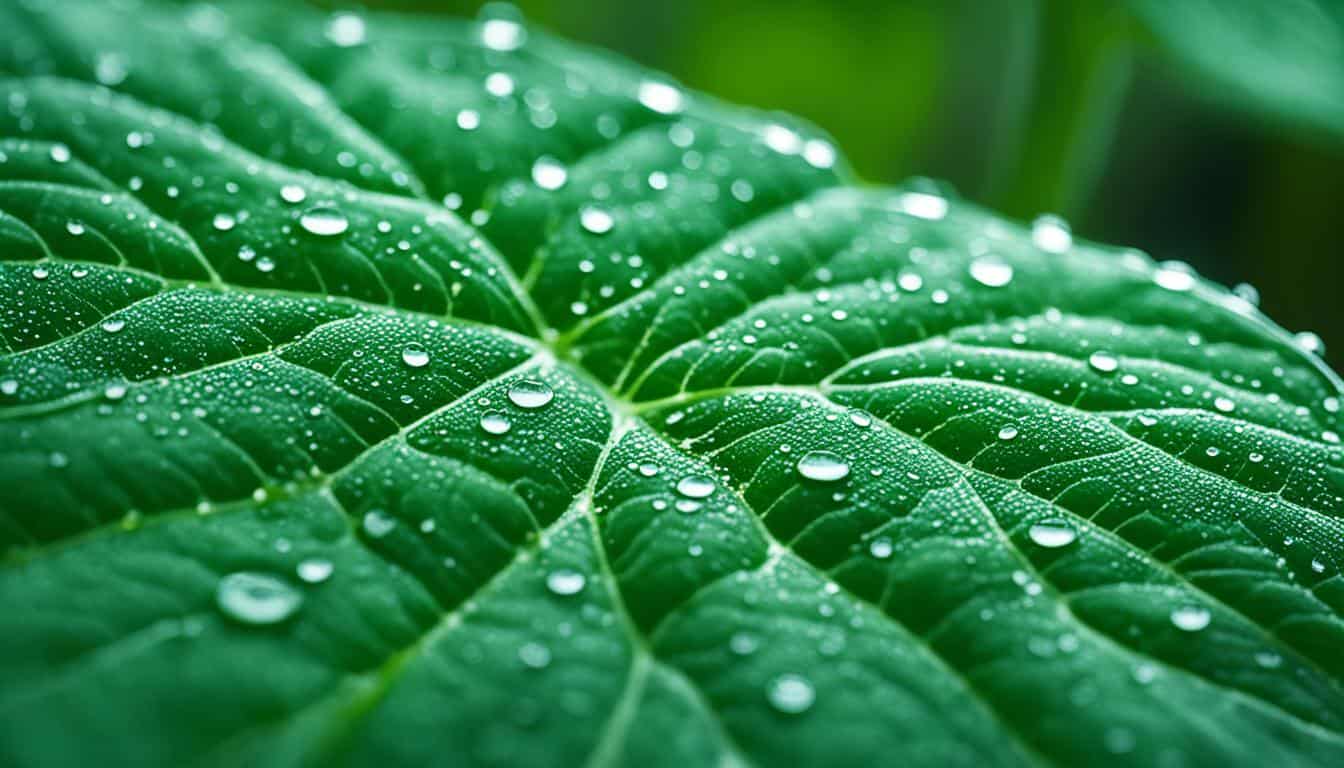
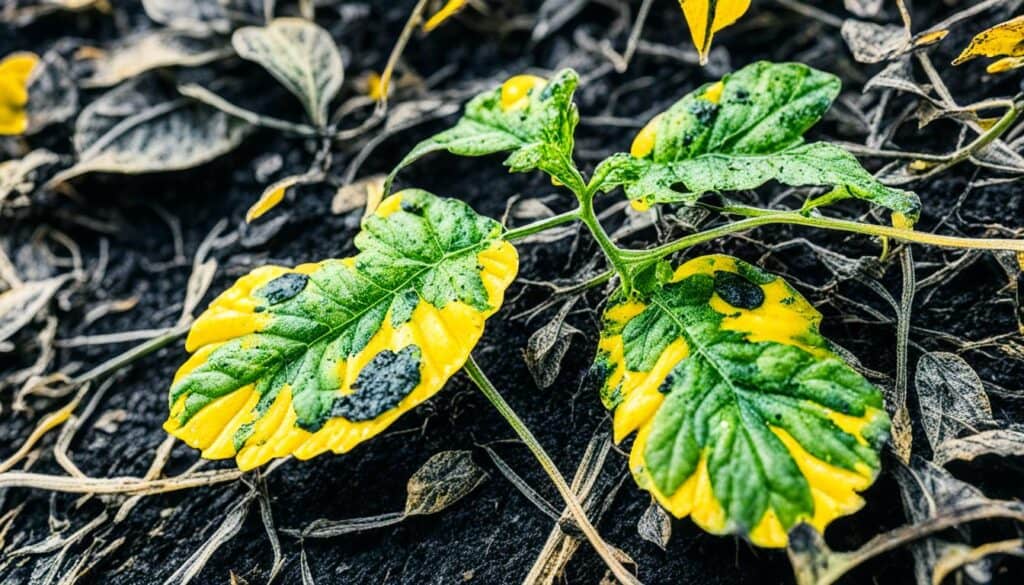
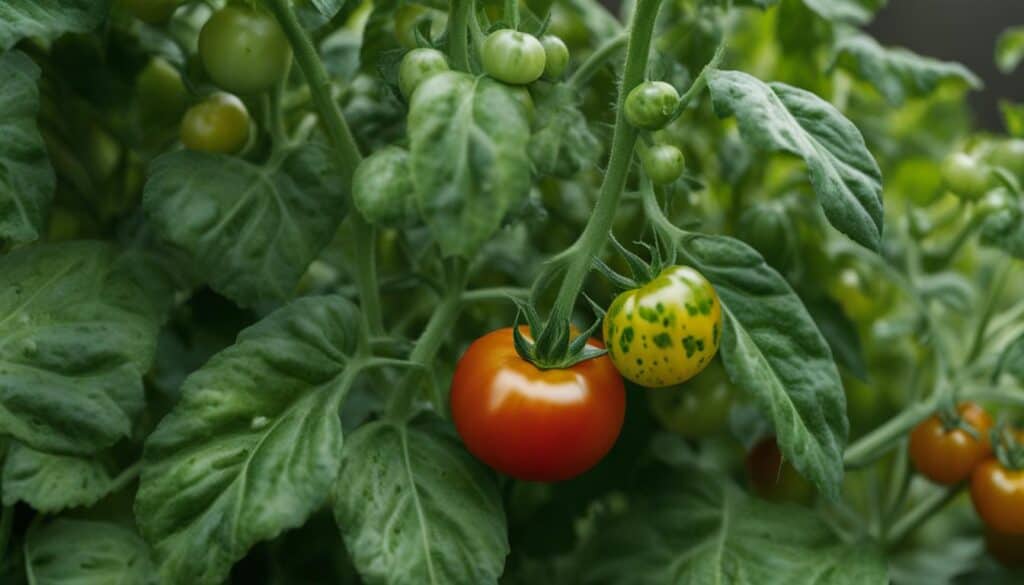
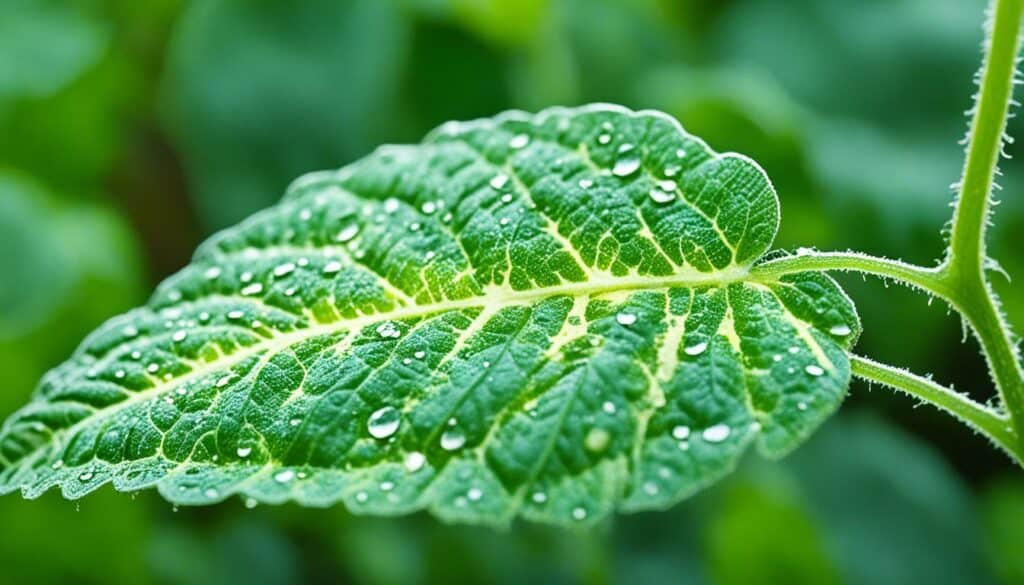

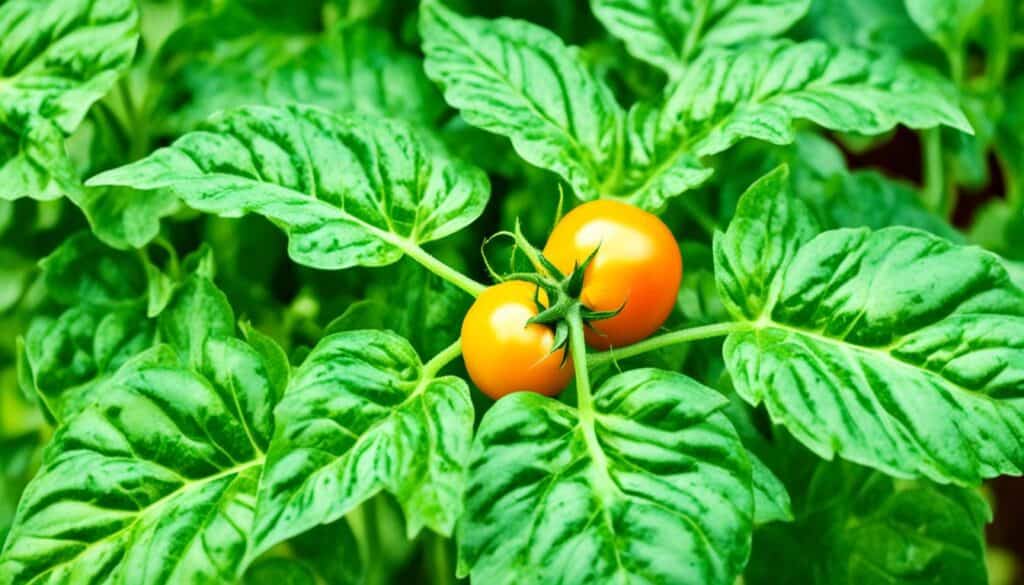



Leave a Reply